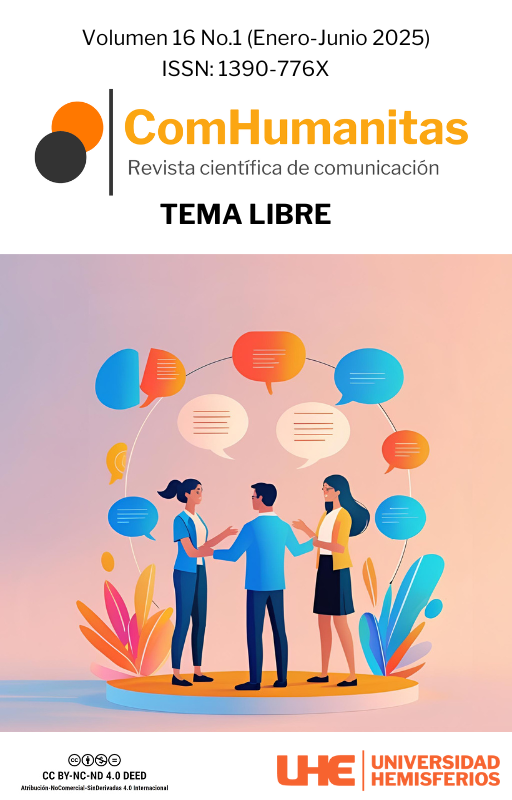The romanticization of the drug trafficker in audiovisual productions and its relationship with governmental legitimization and political marketing
Abstract
The purpose of this text is to show that the rise and romanticization, in series or movies, of characters inspired by mobsters or drug traffickers is possible because they do not propose a change in the system under slogans of social vindication, so their existence is harmless for hegemonic governments and elites. Even such romanticization, shaped in the social imaginary through these productions, can contribute to governmental legitimization and political marketing that governments make of the fight against drug trafficking. Something that does not work like this with leaders of armed social movements, since although both lead or execute actions that infringe the law, the symbolic and factual treatment they receive from governments is proportional to what each represents for governmental power. This influences how popular culture and media products portray them, and how the public and elites respond to them.
Downloads
References
Anguiano, A. (2014). Calderón, aprendiz de brujo o la guerra como escape. Región y sociedad, vol. 26. https://www.scielo.org.mx/scielo.php?script=sci_arttext&pid=S1870-39252014000600011.
Baena, J. (2003). El marketing político como instrumento metodológico de la comunicación política. Estudios políticos, núm, 34, pp. 35-50. file:///Users/usuariofinal/Downloads/maria_marcela,+EP-03-n34-1227.pdf.
Bruhn, K. (ed.). (2012). La comunicación y los medios. Metodologías de investigación cualitativa y cuantitativa. México: FCE.
Chávez, J. (2019). La romantización del narcocorrido en México. ComHumanitas, vol. 10, núm. 3. file:///Users/usuariofinal/Downloads/Dialnet-LaRomantizacionDelNarcocorridoEnMexico-7443738.pdf.
GI-TOC: Global Initiative Against Transnational Organized Crime. (2023). Índice global de crimen organizado. https://globalinitiative.net/wp-content/uploads/2023/09/I%CC%81ndice-global-de-crimen-organizado-2023.pdf.
Gioia, T. (2021). La música. Una historia subversiva. Ciudad de México: Turner.
Morales, D. (2024). Lo que se sabe de la captura de Ismael ‘El Mayo’ Zambada y Joaquín Guzmán López. El País. https://elpais.com/mexico/2024-07-27/lo-que-se-sabe-de-la-captura-de-ismael-el-mayo-zambada-y-joaquin-guzman-lopez.html
Muñoz, C. (2023). Narcoseries e inversión de roles: el narcotraficante como héroe frente al Estado como villano. Cuicuilco. Revista de Ciencias Antropológicas, vol. 27, múm, 85. https://www.scielo.org.mx/scielo.php?script=sci_arttext&pid=S2448-84882022000300099.
Pardo, N. (2013). Cómo hacer análisis crítico del discurso. Una perspectiva latinoamericana. Colombia: Universidad Nacional de Colombia.
Kadaré, I. (2006). Esquilo. Madrid: Siruela.
Ríos, J. (2021). Terrorismo, legitimidad y militancia: Un Análisis Discursivo sobre ETA, DADOS, vol. 64, 1-33. https://www.scielo.br/j/dados/a/kf3p634zsGBTpGDCTDZgCSr/?format=pdf.
Van Dijk, T. (1999). Ideología. Una aproximación multidisciplinaria. Barcelona: Gedisa.
Copyright (c) 2025 Sofía Gómez Sánchez

This work is licensed under a Creative Commons Attribution-NonCommercial 4.0 International License.
The authors who publish in this journal agree with the following terms:
a. The authors retain the copyright and guarantee the magazine the right to be the first publication of the work as well as a Creative Commons Attribution License that allows others to share the work with an acknowledgment of the authorship of the work and the initial publication in this magazine.
b. Authors may separately establish additional agreements for the non-exclusive distribution of the version of the work published in the journal (for example, place it in an institutional repository or publish it in a book), with an acknowledgment of its initial publication in this journal.
Authors are allowed and encouraged to disseminate their work electronically (for example, in institutional repositories or on their own website) before and during the submission process, as it can lead to productive exchanges, as well as a more early and major published papers (See The Effect of Open Access).






